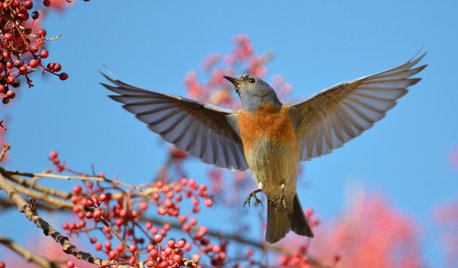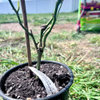East of the Rockies? Check your nearby Knockouts
anntn6b
11 years ago
Related Stories

GARDENING GUIDES6 Plants That Beat Butterfly Bush for the Wildlife Draw
It's invasive, a nonnative and a poor insect magnet. Check out these better alternatives to butterfly bush in the garden
Full Story
BEDROOMSDream Spaces: Bedrooms With Amazing Views
Soaring over the city or nestled amidst nature, these sleeping spaces focus on the most divinely designed feature of all
Full Story
KITCHEN DESIGNTrending Now: 25 Kitchen Photos Houzzers Can’t Get Enough Of
Use the kitchens that have been added to the most ideabooks in the last few months to inspire your dream project
Full Story
WINTER GARDENINGPruning Secrets for Exquisite Roses
Encourage gorgeous blooms year after year with this time-tested advice on how to prune your rosebush in winter for health and shape
Full Story
LIFEIs Cabin Fever Real? Share Your Story
Are snow piles across the U.S. leading to masses of irritability and boredom? We want to hear your experience
Full Story
GARDENING GUIDESWhat Kind of Roses Should You Grow?
Want to add the beauty of roses to your garden? Find out which ones, from old-fashioned to modern, are right for you
Full Story
LIFERetirement Reinvention: Boomers Plot Their Next Big Move
Choosing a place to settle in for the golden years? You're not alone. Where boomers are going and what it might look like
Full Story
GARDENING GUIDESNew Ways to Think About All That Mulch in the Garden
Before you go making a mountain out of a mulch hill, learn the facts about what your plants and soil really want
Full Story
ARTShow News: Rare Quilts Get Museum Time
See 6 intricate designs from a California exhibition and get tips for building your own quilt collection
Full Story
GARDENING GUIDESHow to Bring the Joy of Bluebirds to Your Garden
Attract these beautiful songbirds with nesting habitat and food sources, including berry-producing trees and shrubs
Full Story








professorroush
stlgal
Related Professionals
Carson Landscape Architects & Landscape Designers · Middletown Landscape Contractors · Bergenfield Landscape Contractors · Edwardsville Landscape Contractors · Framingham Landscape Contractors · Gainesville Landscape Contractors · Kearny Landscape Contractors · Long Beach Landscape Contractors · Maywood Landscape Contractors · Monterey Landscape Contractors · Rockville Landscape Contractors · Salmon Creek Landscape Contractors · Smyrna Landscape Contractors · Uxbridge Landscape Contractors · West Palm Beach Landscape Contractorshenry_kuska
anntn6bOriginal Author
catsrose
henry_kuska
stlgal
dolzadell
stlgal
henry_kuska
henry_kuska
kittymoonbeam
henry_kuska
stlgal
anntn6bOriginal Author
buford
stlgal
rosetom